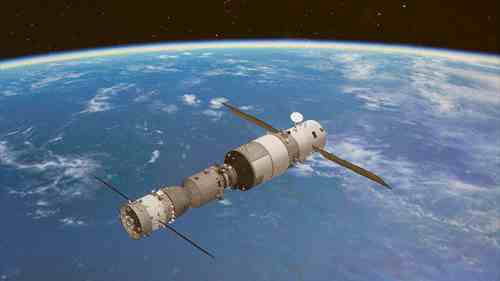
Tech & Sci
13:28, 04-Jan-2017
China's lunar probe to fetch soil samples from the moon this year
Updated
10:31, 28-Jun-2018

China's unmanned lunar probe Chang'e-5, set to be launched around December 2017, will bring lunar soil samples back to Earth, says Wu Yanhua, deputy chief of the China National Space Administration.
The just-concluded Chang'e-3 mission marked the completion of the second phase of China's lunar program, which saw it orbit and land on the moon and successfully return to Earth. The third phase, which includes an unmanned sample collecting mission before returning to Earth, will follow the launch of Chang'e-5.

Long March-5, China's latest generation carrier rocket launched on its maiden flight from Wenchang Space Center, Hainan Province on November 3 ,2016. /CFP Photo
Long March-5, China's latest generation carrier rocket launched on its maiden flight from Wenchang Space Center, Hainan Province on November 3 ,2016. /CFP Photo
According to Ye Peijian, an expert with the China Aerospace Science and Technology Corporation Fifth Research Academy, Chang'e-5 will consist of the orbiter, the return vehicle, the ascender and the lander. The orbiter and return vehicle will orbit the moon, while the lander and ascender will land on the moon.
After the lander finishes taking samples, the samples will be placed in containers carried by the ascender, which will then dock with the orbiter and the return vehicle. The samples will be transferred to the return vehicle, which will eventually bring them to Earth.

A Long March-5 carrier rocket at the Wenchang Space Center, Hainan Province on October, 28. 2016. /China Daily Photo
A Long March-5 carrier rocket at the Wenchang Space Center, Hainan Province on October, 28. 2016. /China Daily Photo
Hu Hao, the chief designer of the third phase, said Chang'e-5 weighs 8.2 tons and will be launched by the rocket Long March-5.
The mission is expected to achieve five "firsts" for China since the country first initiated its space exploration programs: its first unmanned sample-taking mission, its first take-off from the moon's surface, its first unmanned docking on the moon orbiting 380,000km from Earth, and its first return to Earth with lunar soil samples at a speed close to escape velocity.
(Adapted from China Daily)
9km

SITEMAP
Copyright © 2018 CGTN. Beijing ICP prepared NO.16065310-3
Copyright © 2018 CGTN. Beijing ICP prepared NO.16065310-3